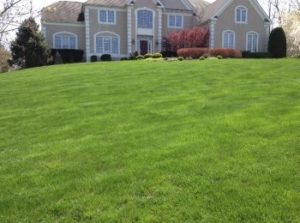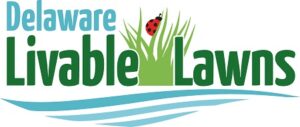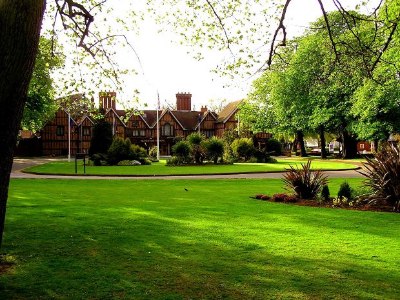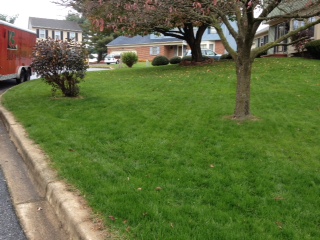
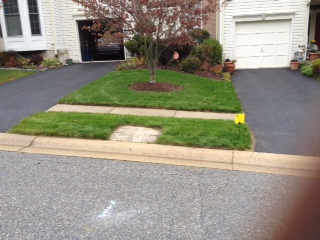
Our customized fertilization programs work for you, not against you!
All lawns are not created equal!
Just like no 2 people are alike, neither are 2 lawns. Some need more attention, some need less. When it comes to feeding your lawn, the products that are used are best suited for the turf in our area, also called the “Transition Zone”. Typically, that means Turf Type Tall Fescue, Fine Fescue, Bluegrass and Perennial Rye grasses. On a lesser note, we do see and have lawns with Zoysia and Bermuda grass mixed in, but in most cases, these grasses are treated more like a “weed”. That is because they are a warm season turf. In the rare case that a lawn is mostly either of these two, then they are treated as if they were in a warm season zone.
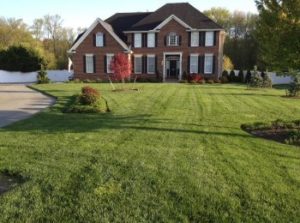
Based on your lawns condition, it might be necessary to develop a more intense program to address any problematic areas. Neglected lawns will usually require additional applications to get them back in shape. Once they have become established, then the nutrient applications would consist of the following:
- Early Spring: Low nitrogen slow release fertilizer with organics to help avoid excessive spring growth
- Late Spring: A second round of slow release low nitrogen with organics to help maintain color
- Summer: Low nitrogen fertilizer 100% non-burning slow release formulation
- Early Fall: Specially formulated fertilizer blend with Bio-stimulants and other organics to aid in recovery from summer stress
- Late Fall: Lime application as well as other nutrients that may be needed based off of soil sample analysis
Proper fertilization will help keep your grass healthy all year long. All lawns need nutrients to thrive, some more than others. The custom blended slow release fertilizers that are used contain zero phosphorus. However, soils showing low levels of this and/or any other nutrient would have them applied during the season at the appropriate time.
Soil testing:
A soil sample of your lawn is taken and sent out for analysis initially when you become a client. Additional samples are then done every 3-5 years thereafter depending on the circumstances present at the time. For lawns that start out with major deficiencies, a follow up sample analysis would be done a year later. Future adjustments would be made, if needed. based off of that analysis.
Soil testing is the foundation for any successful program. Rainfall or irrigation can reduce calcium and magnesium from your soil through leaching over time, thereby lowering your lawns pH to a more acidic level. Lime helps to reduce soil acidity (raises the pH level) making the soil more favorable for turf health. Applications are made to either increase or maintain pH levels based off of soil testing results.
Weed Control
Pre-emergent Controls:
One heavy rate application applied in early to mid spring is usually adequate to control crabgrass. If the turf is thin or over watered, then a second application may be needed to avoid crabgrass breaking through. Also, cutting your grass lower than 3” will increase the chances of poor control as this allows the sun to penetrate the shorter canopy . This in turns lets the soil heat up and allows both broadleaf and grassy weeds, including crabgrass to germinate. Therefore, the best weed control starts with a thick lawn that is cut at the proper height. It is for this reason that I always recommend cutting your grass at a height no lower than 3.5″.
Most pre-emergent products can also be used to control certain winter annual grasses and broadleaf weeds if the situation arises. However, these products need to be applied at the proper time and prior to any weeds germinating
Post-emergent Controls:
These products are used after broadleaf and grassy weeds have sprouted and only where needed to control them. With the exception where broadcast spraying is needed on a heavily weed infested lawn, these products are used on a “spot spray basis” only.
Insect Control
Preventative Insect Controls:
Chinch bugs, sod webworms and grubs just love to feed on your lawn. While there are other potential damaging insects, these seem to be the three most common insects that we deal with in this area. Left unchecked, they can pose major problems.
Controls are applied for these insects in the late spring and summer months as a preventative measure. One application to control grubs will give season long protection under normal conditions. Surface insects such as Chinch Bugs and Sod webworms, in most cases, can be controlled with a single application, but is not guaranteed.
Thatch layers over 3/4″ may not allow the material to move to the desired location to control either of these pests.
Majority of insect damage shows up during the summer stress periods and can appear to look like a dry area or “Hot” spots. Unfortunately, by the time you realize that it is insect damage, you are most likely looking at a large expense in repairing your lawn.
It is my opinion that you prevent a potential problem from occurring, rather than running the risk, and the added expense of having to repair a damaged lawn.
Fungus Controls
Controls for diseases are only used in certain cases. The majority of what we see are usually cosmetic in nature and run their course in a few weeks without any long term damage. Red Thread and Dollar Spot are the 2 most common but they only affect the leaf and not the roots, so control measures are normally not needed.
Preventative applications are an option if you want to go this route, but they need to be started prior to an outbreak and are normally used on the more severe cases. Treatments normally start late April or early May, depending on weather conditions and go through August, with applications done every 28 to 30 days. In order to be as effective as possible, ALL applications must be applied during this time frame to have the best chance to work. Depending on the size of the area being treated, this can get expensive and still does not guarantee 100% control.

